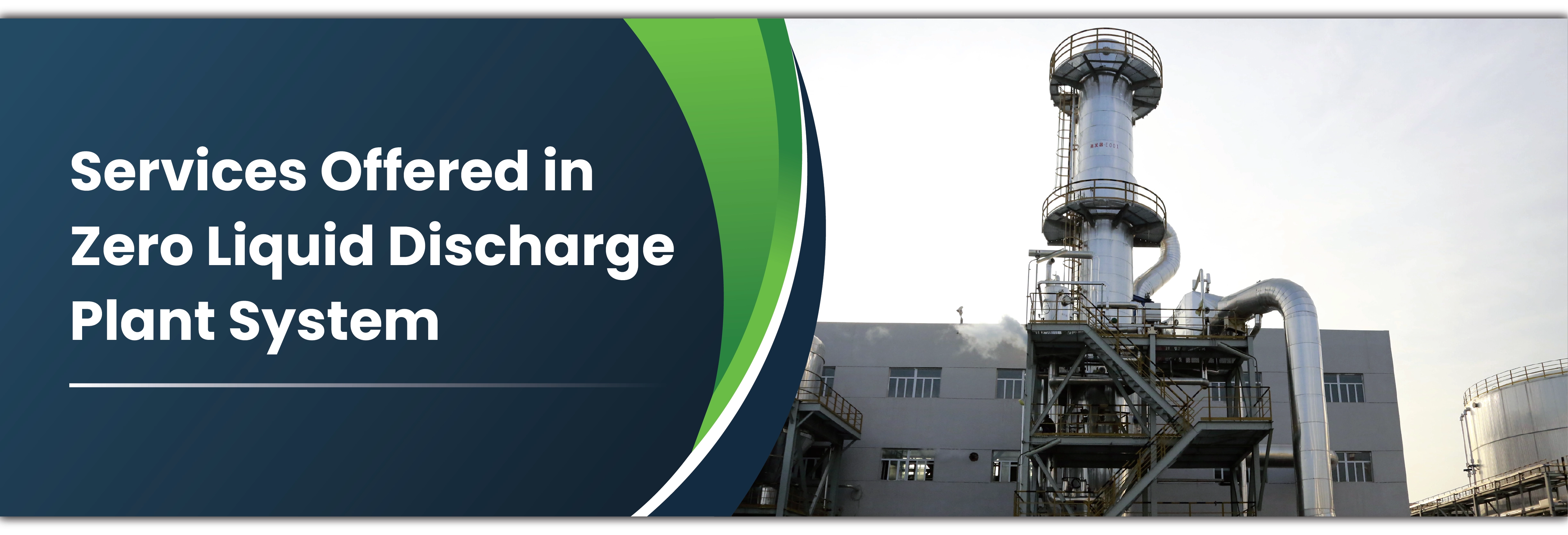Zero Liquid Discharge Plant
KELVIN offers complete thermal and non-thermal ZLD solutions to manage tough-to-treat wastewaters. KELVIN’S proprietary evaporators, brine concentrators, and crystallizers can help recover more than 95% of your wastewater while reducing the remaining brine as a product or solid. KELVIN’S Sievers total organic carbon (TOC) analyzers help control the quality of water to be reclaimed or recycled in semiconductor operations.
Zero liquid discharge technologies help plants meet discharge and water reuse requirements, enabling your business to:
-
Meet stringent cooling tower blowdown and Flue Gas Desulfurization (FGD) discharge regulations.
-
Treat and recover valuable products from waste water sources.
-
Better manage thegenerated output water.
-
Control the water quality that is to be reclaimed or recycled.
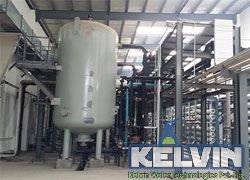
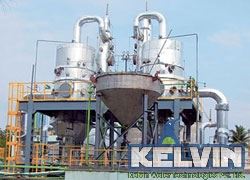
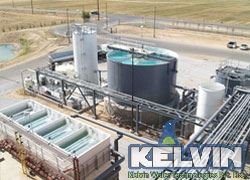
What’s included in a basic ZLD treatment system?
The exact components of a ZLD treatment system will largely depend on the volume of dissolved material present in the waste, the system’s required flow rate what specific contaminants are present. But in general, a basic ZLD treatment system typically includes some type of:
-
clarifier and/or reactor to precipitate out metals, hardness, and silica
-
chemical feed to help facilitate the precipitation, flocculation, or coagulation of any metals and suspended solids
-
filter press to concentrate secondary solid waste after pre-treatment or alongside an evaporator
-
ultrafiltration (UF) to remove all the leftover trace amounts of suspended solids and prevent fouling, scaling, and/or corrosion down the line of treatment
-
reverse osmosis (RO) to remove the bulk of dissolved solids from the water stream in the primary phases of concentration
-
brine concentrators to further concentrate the reject RO stream or reject from electrodialysis to further reduce waste volume
-
evaporator for vaporizing access water in the final phases of waste concentration before crystallizer.
-
crystallizer to boil off any remaining liquid, leaving you with a dry, solid cake for disposal
Technologies
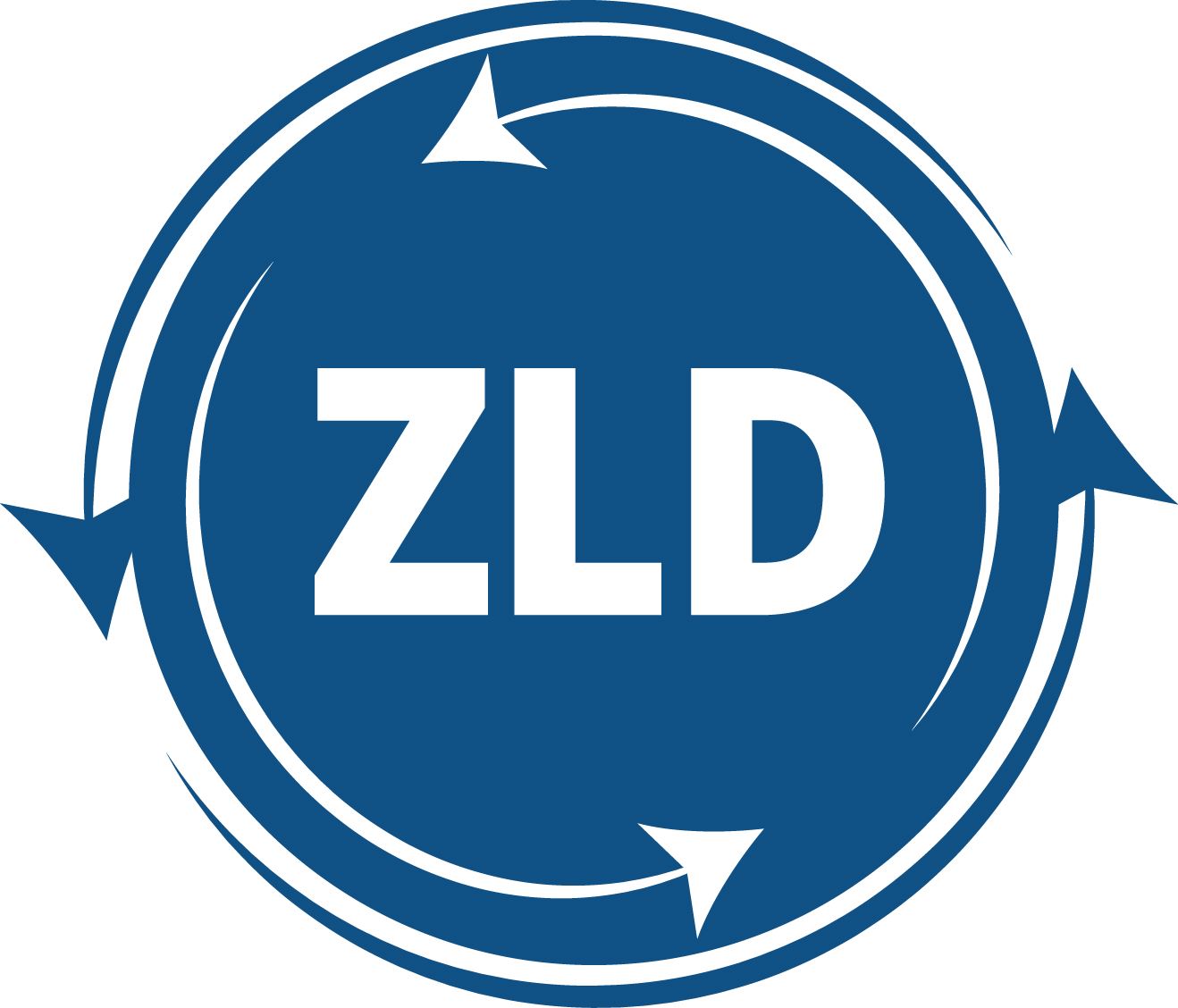 Falling Film Brine Concentrators
Falling Film Brine Concentrators
 BForced Circulation Crystallizer
BForced Circulation Crystallizer
 Horizontal Spray Film Evaporator
Horizontal Spray Film Evaporator
 Hybrid Systems with Membrane Pre-Concentrators
Hybrid Systems with Membrane Pre-Concentrators
 Biological Treatment
Biological Treatment
 Solids Waste Handling
Solids Waste Handling
Waste Water Constituents
Careful consideration of waste water chemistry is needed for the successful design and operation of a zero liquid discharge system. A sound water chemistry design basis is key to successful zero liquid discharge design.
The chemical constituents of concern for a zero liquid discharge system typically are as follows:
ZLD Treatment Process Stages
Stage 1
Preliminary Treatment
Effluent Screening Process
Oil Removal Process
Effluent Mixing Process
pH Correction Process
Stage 2
Electrochemical Coagulation and Flocculation Process
Primary Sudge Settling, treatment process.
TSS, Colour & Associated BOD/COD Removal Process
Hardness & heavy metals removal process.
Stage 3
Biological Treatment Process
Secondary sludge settling process.
Sludge Treatment Process
BOD & COD removal process.
Stage 4
Depth Filtration/ Polishing Process
Polishing of TSS, SDI, Color, Turbidity, Virus etc.
Stage 5
TDS removal process.
Salt Crystallization process.
Benefits of ZLD Plant
Zero liquid discharge plant technology is growing globally as an important wastewater management strategy to reduce water pollution and extend water supply.
The main benefits of ZLD are:
Minimizes wastewater discharge.
Maximizes water recovery.
Create a valuable product for sale.
Removing environmental issues.
Reduction of dependence on local water sources and local legislation.
About ZLD
Zero Liquid Discharge (ZLD) is a water treatment process with a goal of recirculation of all of the possible water back to the process with zero liquid waste. The ultimate treatment process has zero or nearly zero adverse impact on the environment.
Pre-treatment - reducing TSS, COD, Turbidity to filter out particle impurities or precipitation of sparingly soluble compounds to allow additional treatment.
Concentration of dissolved solids - by membrane technologies, either by a combination of reverse osmosis (RO) with electrodialysis (EDR). The way of concentrating RO brine by EDR. Or single step electrodialysis. Using these technologies to concentrate the stream we can achieve more than 98 % of recovery.
Thermal treatment - the last step is usually consisting of Evaporator/Crystallizer to generate solids. Final evaporation of remaining water for re-use together with precipitation of solid waste for disposal in a controlled landfill or to be sold as a valuable product (pure NaCl Na2SO4 etc.)
ZLD – FAQs
Q1. What is a zero liquid discharge (ZLD) plant?
Ans. Zero Liquid Discharge (ZLD) is a wastewater treatment process that uses a proprietary technology to remove all the liquid waste from a system. The goal of the Zero Liquid Discharge (ZLD) process is to reduce economically Wastewater, create clean water suitable for reuse, and save money.
Q2. Why is a zero liquid discharge plant necessary for industries?
Ans. Industrial wastewater has become a forefront of concern within both countries. Both countries have created regulations to require zero liquid discharge, especially in river systems due to the contamination caused by it. Another important consideration is that wastewater can contain valuable resources that can be recovered for use in alternative energy sources.
Q.3 What is the zero liquid discharge process?
Ans. Zero liquid discharge (ZLD), also referred to as zero waste discharge, is a wastewater treatment technology that permits the reuse of wastewater and zero discharge at the end of the treatment cycle. ZLD systems employ advanced technologies to purify and recycle virtually all the wastewater produced.
Q.4 Which technologies are used in zero liquid discharge plants?
- Forced Circulation Crystallizer
- Horizontal Spray Film Evaporator
- Falling Film Brine Concentrators
- Hybrid Systems with Membrane Pre-Concentrators
- Solids Waste Handling
- Biological Treatment
Q.5 What are the disadvantages of ZLD?
Ans. High capital and operational costs: ZLD systems are typically expensive to install, maintain and run. They also require high capital investments, and as a result can be prohibitively expensive for manufacturers of smaller or less-complex products. The high energy consumption of some ZLD processes can also increase operating costs. Complexity: ZLD systems require specialized expertise to operate and maintain. This can make it difficult for manufacturers to find and retain qualified personnel, as well as lead to more frequent breakdowns and downtime. Product Loss: A common problem with the ZLD process is that it produces waste, either a sludge or solids. In many cases, this solid waste must be disposed of correctly. Additional costs for disposal or treatment can occur.
Q.6 What are the parameters of ZLD plant?
Ans. ZLD will be recognized and certified based on two broad parameters that is, water consumption versus wastewater re-used or recycled (permeate) and corresponding solids recovered (percent total dissolved / suspended solids in effluents).
Q.7 How does a ZLD plant work?
Ans. Zero liquid discharge (ZLD) is a strategic wastewater management system that ensures that there will be no discharge of industrial wastewater into the environment. It is achieved by treating wastewater through recycling and then recovery and reuse for industrial purpose.
